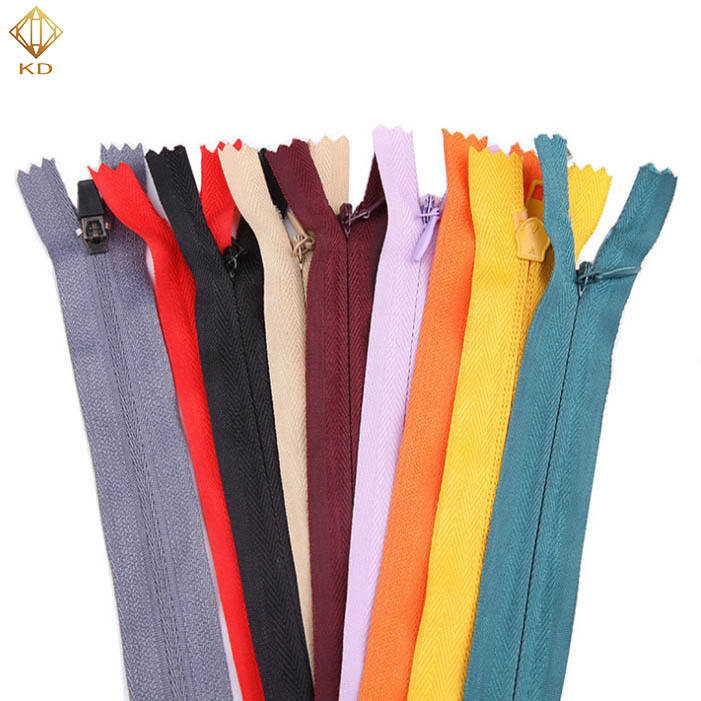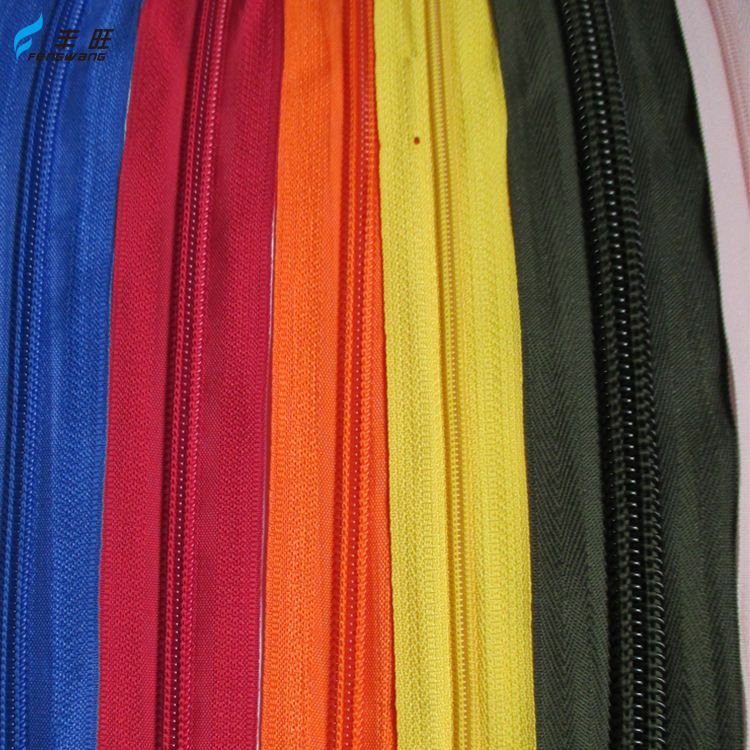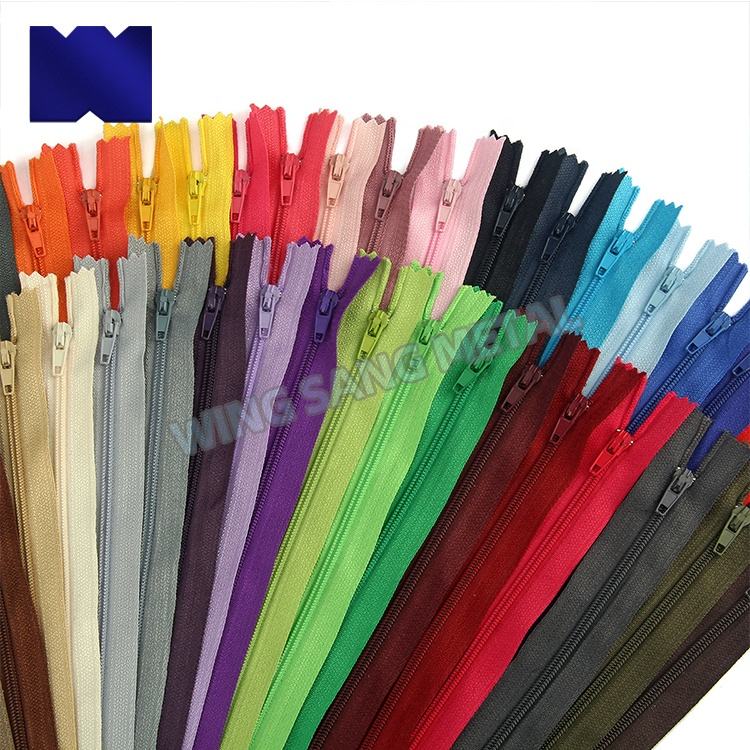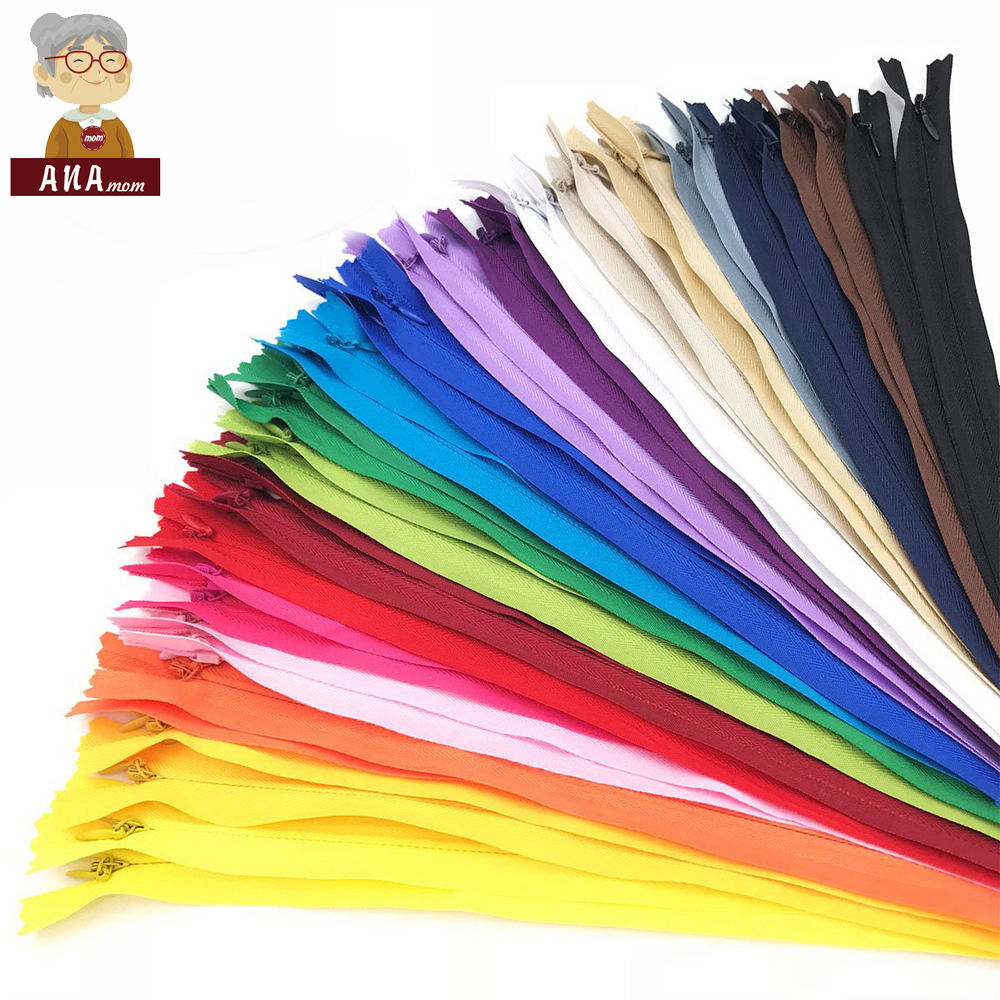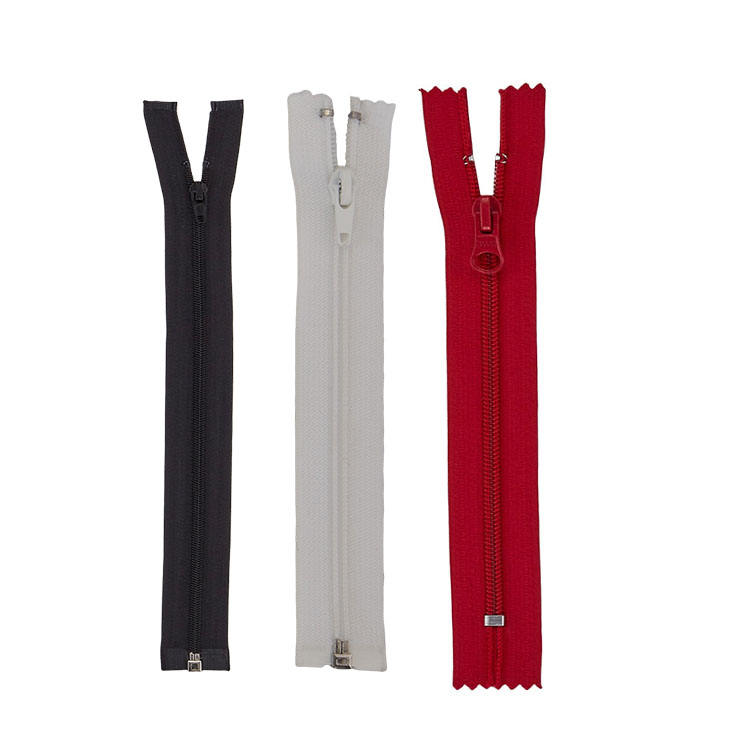REVOLUTIONIZING CLOTHING SINCE 2017
Our in-house making zippers can be widely used in Garment , Shoes, Bags, Luggage and Home Textile etc.
Eco-friendly and Sustainable prducts have been in our supply list since 2017;
Applications and Future Development of Bio-based Materials in Fashion

Since the beginning of the 21st century, with the increasing depletion of global petrochemical resources and the growing environmental awareness in the consumer market, natural polymer materials with sustainable development characteristics have become increasingly important. Many raw materials are transitioning from chemical sources to natural extracts, and there is an urgent need for “next-generation materials” to meet the growing demands for environmental protection and performance.
As concepts such as “new productive forces,” “sustainable development,” “green economy,” and “ESG” have shifted from being options to essential elements of national and corporate development, more consumers are beginning to pay attention to the environmental impact of the textile manufacturing process, seeking sustainable and eco-friendly fashion choices. Change is happening: the emergence of low-carbon innovative materials, such as bio-based leather and spider silk protein fibers, is gradually replacing environmentally harmful petrochemical materials, making them favorites among major fashion brands. International brands are flourishing in the field of “sustainable fashion,” and domestic brands are not lagging behind, with an increasing number of local fashion enterprises collaborating with companies in the bio-based materials sector. Today, positioned at the strategic height of dual carbon goals, bio-based materials are becoming a star player and the preferred choice for achieving carbon neutrality.
1.What are Bio-based Materials?
Bio-based materials are new materials and chemical products made from renewable biomass such as sugarcane, corn, legumes, straw, and bamboo powder. They include basic bio-based chemicals like bioalcohols, organic acids, alkanes, and olefins produced through biosynthesis, processing, and refining, as well as bio-based fibers and bio-based rubber.

Bio-based materials
Compared to traditional petrochemical materials, these materials reduce carbon dioxide emissions and dependence on oil, while their production processes are greener, aligning with the pursuit of environmental protection. The main characteristics of these materials include:
- Renewability: Unlike traditional petroleum-based materials, bio-based materials originate from renewable resources and can continually cycle in nature.
- Environmental Friendliness: Bio-based materials typically have a lower carbon footprint and can effectively reduce greenhouse gas emissions.
- Diversity: Bio-based materials come in various types and can be applied across multiple industries, including packaging, construction, and textiles.
Through these characteristics, bio-based materials demonstrate tremendous market potential and environmental value.
2.Types of bio-based materials
Bio-based materials can be categorized into several main types, including:
Bio-based Plastics:
Bio-based plastics are one of the most common types of bio-based materials, primarily including:
- Polylactic Acid (PLA): PLA is a bio-based plastic made from fermented plant starch (such as corn or sugarcane) and is widely used in packaging, disposable tableware, and textiles.
- Polyvinyl Alcohol (PVOH): PVOH has good water solubility and is commonly used in packaging and coatings.
- Bio-based Polyethylene (Bio-PE): Bio-PE has similar properties to traditional polyethylene but is derived from plants, making it suitable for various plastic products.
Bio-based Fibers
Bio-based fibers primarily include:
- Natural Fibers: Such as cotton, linen, wool, and bamboo fibers, these fibers are sourced from nature and are easily biodegradable.
- Regenerated Cellulose: Such as Tencel (Lyocell) and Modal, made from wood pulp, these fibers have excellent comfort and moisture absorption.
Bio-based Composites
Bio-based composites combine bio-based plastics with other materials (such as natural fibers) to enhance strength and durability. These composites show excellent performance in the clothing and other sectors.
Bio-based Chemicals
Bio-based chemicals are produced through biotechnological processes, such as bio-based ethanol and bio-based butanol, which can serve as raw materials for other materials.
3.Applications of Bio-based Materials in Fashion Fabrics
The application of bio-based materials in fashion fabrics is rapidly evolving, especially with the widespread use of polylactic acid (PLA) fibers and other natural fibers, guiding the clothing industry towards sustainability.
Polylactic Acid (PLA)
Among various bio-based materials, polylactic acid fibers are one of the most commonly used in fashion fabrics. They are derived from the fermentation and polymerization of crops such as corn (corn → starch → sugar → lactic acid → PLA), obtained through processes like melt spinning. To avoid “competing with people for food and land,” non-food crops (like cassava) and even agricultural waste such as straw and stalks can also be used to produce lactic acid, which is then used to create PLA.

PLA materials
Polylactic Acid (PLA) fibers have several advantages:
- Comfort: PLA fibers are soft and breathable, making them ideal for comfortable clothing. Particularly in activewear and underwear, PLA provides a good fit and comfort.
- Moisture Absorption: PLA fibers have good moisture absorption, effectively regulating body temperature and keeping the skin dry, making them suitable for sportswear and outdoor gear.
- Dyeability: PLA fibers can combine well with various dyes, allowing designers to create rich colors and patterns, adding creativity to fashion garments.
These characteristics enable PLA fibers to strike a balance between environmental sustainability and fashion appeal, making them increasingly favored by brands and consumers. PLA fibers are biodegradable in nature; they can be broken down into carbon dioxide and water by microorganisms in soil or seawater. When burned, they do not emit toxic gases or cause pollution, achieving a completely natural carbon cycle. This makes PLA fibers a promising material for the 21st century.
Other Bio-based Fibers
Apart from PLA, other bio-based fibers also play a significant role in clothing manufacturing:
- Natural Fibers: Cotton, linen, wool, and bamboo fibers are widely used in the fashion industry due to their renewability and biodegradability. Bamboo fibers, in particular, are not only eco-friendly but also possess antibacterial properties, making them ideal for intimate apparel.
- Regenerated Cellulose: Fibers such as Tencel (Lyocell) and Modal are made from wood pulp through environmentally friendly processes. These fibers offer benefits like breathability, a smooth feel, and excellent moisture absorption, making them suitable for the high-end fashion market.
Functional Bio-based Fabrics
In recent years, with advancements in technology, functional bio-based fabrics have gradually entered the market. For example, bio-based materials with waterproof, UV-resistant, or antibacterial properties can meet consumer demands for functional clothing. These fabrics often achieve these properties through special processing techniques or combinations with other materials.
4.Applications of Bio-based Materials in Fashion Accessories
bio-based materials are not only applied in fashion fabrics but are also gradually penetrating the production of fashion accessories.
Bio-based Buttons
Bio-based buttons are a great example; these buttons are typically made from plant-based materials (such as bioplastics or natural wood). Compared to traditional plastic buttons, bio-based buttons are not only more eco-friendly but also excellent in appearance and texture, perfectly complementing various fabrics.

Bio-based Buttons
Bio-based Zippers
The emergence of bio-based zippers provides more options for sustainable garment production. These zippers utilize bio-based plastics like PLA (polylactic acid) and PBS (polybutylene succinate), or combine with natural materials (such as wood fibers), reducing reliance on non-renewable resources and lowering carbon emissions during production. They also maintain durability and strength comparable to traditional materials, making them suitable for activewear, outerwear, and everyday clothing, catering to diverse market demands.

Bio-based Zippers
Other Bio-based Accessories
Additionally, bio-based materials can be used for other accessories, such as bio-based patches, webbing, and insulation materials for outerwear, all emphasizing environmental considerations in their production to effectively reduce the overall carbon footprint.
The application of bio-based materials in apparel and accessories not only meets consumers’ demands for eco-friendly and sustainable products but also offers brands opportunities to enhance their market competitiveness. By adopting bio-based materials, apparel products can attract consumers who prioritize sustainable fashion and strengthen brand image. Through continuous exploration and development, bio-based materials will play an increasingly significant role in the future apparel industry, driving the sector toward a greener and more sustainable direction.
5.Market trends of bio-based materials
Global market demand and growth
In recent years, as consumer interest in sustainable fashion increases, the market demand for bio-based materials has risen steadily. Market research predicts that the market for bio-based fibers and materials will grow rapidly in the coming years. According to a Zion Market Research report, the global bio-based materials market was valued at approximately $41.37 billion in 2023, expected to generate about $320.88 billion in revenue by the end of 2032. The bio-based materials industry is poised for significant growth, with ample opportunities on the horizon. In the capital market, bio-based material startups continue to show immense potential and attract substantial investment.
Brands are also realizing that bio-based materials, due to their functionality and technical barriers, are gradually becoming valuable tools for enhancing product added value. Adopting bio-based materials not only meets consumers’ environmental demands but also boosts brand image and increases market competitiveness.
Consumer focus

bio-based garments
Surveys show that more consumers prioritize environmental and sustainability factors when purchasing clothing. This trend encourages brands to focus more on sustainable development in product design and material selection. Consumers are willing to pay a premium for eco-friendly products, creating a favorable market environment for the application of bio-based materials.
6.Future development of bio-based materials
New technologies and innovations: The future of bio-based materials is filled with innovative possibilities. For example, advancements in 3D printing technology are making the design and production of bio-based materials more flexible. The integration of smart fibers and wearable technology also opens new avenues for the application of bio-based materials.
Sustainable development goals and industry standards: With the global emphasis on sustainable development, governments and industry organizations are formulating related standards and policies to promote the application of bio-based materials. Due to their environmental friendliness and resource-saving characteristics, bio-based materials have become crucial for achieving carbon neutrality goals, receiving significant attention at the national level.
Conclusion
Currently, transitioning to a low-carbon circular economy has become a global consensus. Through biomass—bio-based products—recycling or combustion—CO2—biomass, a complete closed loop can be formed to reduce greenhouse gas emissions. Thus, developing the bio-based industry is a crucial part of a low-carbon economy. As an upgraded alternative to petroleum-based materials, bio-based chemicals and materials are emerging as a new trend, and China’s bio-based materials industry is gradually moving toward scaling and industrialization. This potential new blue ocean will see participants creating more waves in the future.

Future Development of Bio-based Materials
Although some bio-based materials currently have higher costs and limited production, as technology iterates and various policies promoting the development of sustainable bio-based materials and low-carbon practices are rolled out, along with the awakening of consumer awareness towards green consumption, “next-generation materials/future materials” will find broader market applications.
As a vital component of environmental protection and sustainable development, bio-based materials are transforming the fashion industry. By reducing dependence on fossil fuels and minimizing environmental impact, bio-based materials not only present new opportunities for brands but also offer consumers more sustainable choices. We encourage more brands and consumers to pay attention to bio-based materials and work together to promote the development of sustainable fashion.
FAQ:
1.What is the main difference between bio-based materials and traditional materials?
Bio-based materials are derived from renewable resources and typically have a lower carbon footprint and better biodegradability, while traditional materials, such as petroleum-based plastics, usually come from non-renewable resources and have a more significant environmental impact.
2.How durable are bio-based materials?
While some bio-based materials may not perform as well as traditional materials, many bio-based fibers (such as PLA and regenerated cellulose) have proven to be durable and suitable for everyday wear.
3. How to choose the right bio-based fabric?
When selecting bio-based fabrics, consider factors such as comfort, breathability, durability, dyeability, and the brand’s environmental commitments. Compare the characteristics of different materials to choose the one that best meets your needs.
Call to Action
If you are interested in bio-based materials, feel free to contact us for more information about our products or visit our website to explore our sustainable fashion collection! Let’s move towards an eco-friendly future together.
Contact Information:
Our company, SHANGHAI HIGER GARMENT ACCESSORIES CO.LTD, specializes in zipper and accessory production, welcome professionals and companies with accessory needs from all over the world to communicate and negotiate with us. For detailed product information, please visit our official website at www.higer-zipper.com or directly contact us via email at cs-1@allin-higer.com, we look forward to your business to provide high-quality, high standards and professional services.
For any questions or further information, please contact us via:
Phone:+86 135 2414 2125
Email: cs-1@allin-higer.com
Website: www.higer-zipper.com




